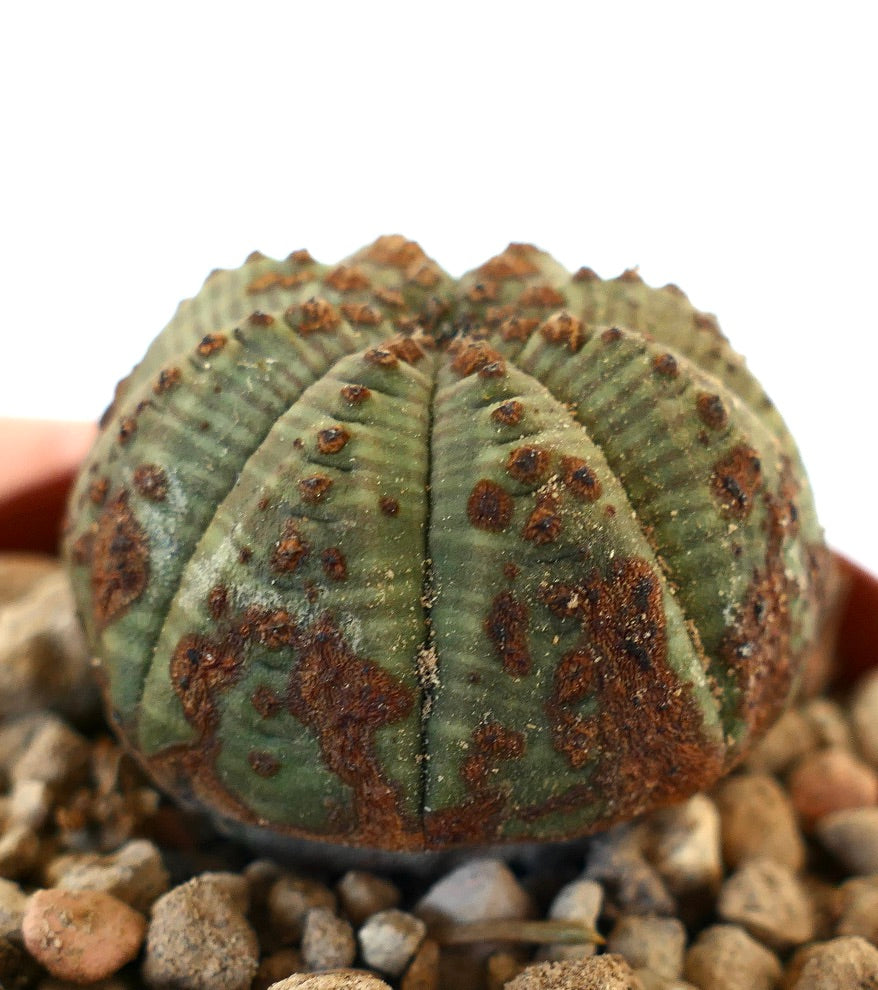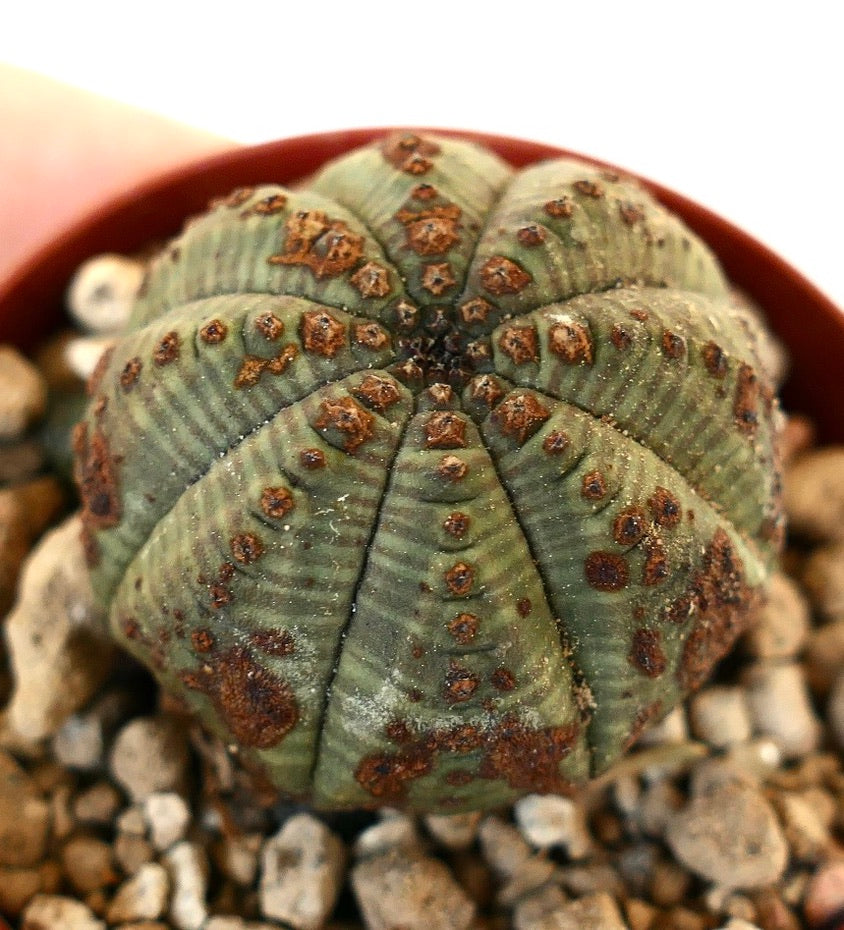Euphorbia obesa DOTS & BROWN MARKS MP1
Euphorbia obesa DOTS & BROWN MARKS MP1
Couldn't load pickup availability
Product Description
Euphorbia obesa: Description, Discovery History, and Cultivation Techniques
Description of Euphorbia obesa: Euphorbia obesa is a succulent plant belonging to the Euphorbiaceae family, native to the semi-desert regions of South Africa. Also known as the "baseball plant" for its distinctive spherical shape, this plant features a pale green, roundish stem that expands evenly in all directions. Its vertical stripes give the plant a unique and decorative appearance. Flowers, usually insignificant, may appear in spring or summer.
Discovery History of Euphorbia obesa: Euphorbia obesa was first discovered in 1891 by the Swiss botanist Carl Leichlin during an expedition in South Africa. Its unusual appearance and ability to survive in extreme conditions attracted the attention of plant enthusiasts worldwide. Since then, it has become one of the most popular succulent plants grown in pots.
Cultivation Techniques of Euphorbia obesa: To successfully cultivate Euphorbia obesa, it is essential to provide the right environmental conditions and care. Here are some helpful tips:
-
Lighting: Place the plant in an area where it receives at least 6-8 hours of direct sunlight per day. Avoid prolonged exposure to extreme temperatures.
-
Soil: Use well-draining soil, such as a specific succulent or cactus mix, to avoid waterlogging. Ensure the pot has drainage holes to allow excess water to drain away.
-
Watering: Euphorbia obesa is drought-tolerant and prefers slightly dry soil. Water only when the soil is completely dry, reducing watering during the winter months when the plant enters dormancy.
-
Temperature: The ideal temperature for Euphorbia obesa is around 20-25°C during the growing season. Protect the plant from frost during the colder months and avoid temperatures above 30°C, which could damage the plant.
-
Pruning: Remove any dead leaves or branches to promote healthy growth and aesthetic appearance. Use protective gloves during pruning as the latex in the plant can cause skin irritation.
-
Fertilization: Fertilize Euphorbia obesa with a diluted half-strength fertilizer during the growing season, approximately once a month. Avoid over-fertilizing, which could damage the plant's roots.
By following these simple cultivation techniques, you can enjoy the beauty and resilience of Euphorbia obesa in your garden or indoors. With its unique charm and ease of care, this succulent plant is an ideal choice for gardening enthusiasts of all experience levels.
SKU:BA-2633-S
Cultivation
Cultivation
Info and Disclaimers
Info and Disclaimers
Plant height:
Pot diameter:
Picture taken on:








